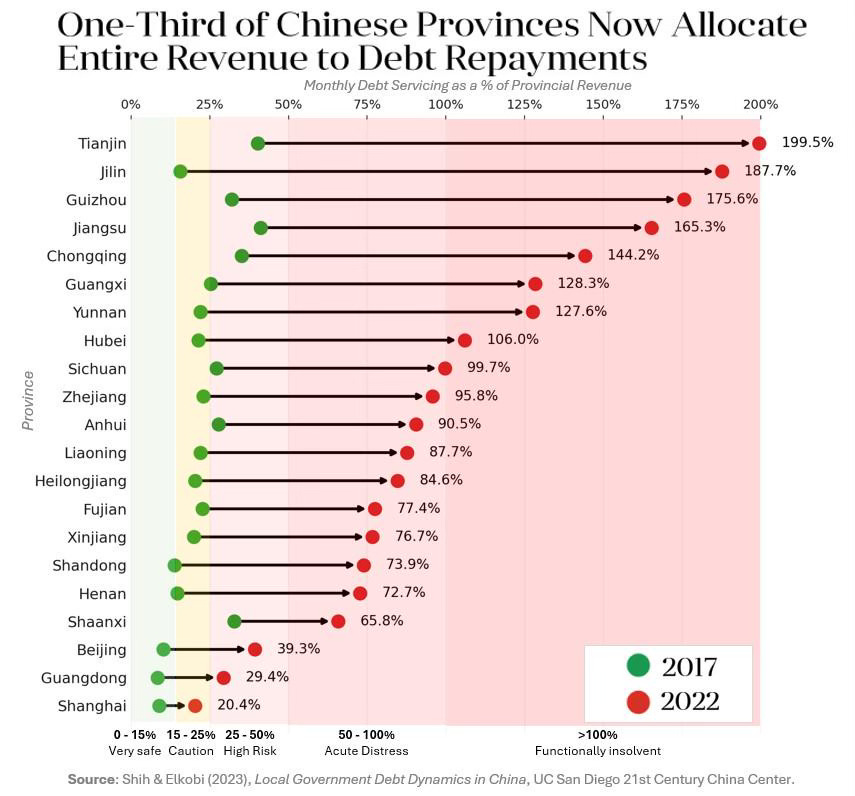China props up its provinces
Five charts to start your day
China’s provinces can’t pay their bills. In Chongqing for instance, officials created a task force called “smash pots and sell iron” to liquidate anything they can sell. It doesn’t end there. In Shandong and Jiangxi, teachers work for months without pay. Nationwide, ten trillion yuan ($1.4 trillion) in wages and contractor payments sit unpaid.
Three decades of debt-fuelled growth have left these Chinese provinces in a difficult financial position. When I started my career, investing in China was all the rage. Every pension fund bought the China growth story. Asset managers grew rich on the investment products they sold. In some ways, we were partly responsible for fuelling this exuberance.
Our economists praised China’s infrastructure miracle while provinces borrowed twice their revenue to fund it. The IMF now says 60 trillion yuan ($8.4 trillion) of debt threatens China’s financial stability. Beijing’s response has been a 10 trillion yuan ($1.4 trillion) debt swap that moves the problem to the central government. Let’s hope they can manage it.
CHART 1 • China props up its provinces
This chart shows that a third of China’s provinces spend more on debt servicing than they earn each month. Take Tianjin: debt service was 50% of the province’s revenue in 2017. Now it’s 200%. Property crashed, land sales evaporated, but the bonds still need to be repaid.
Local government financing vehicles (LGFVs) are shadow companies provinces created to sidestep borrowing limits. They borrowed trillions to build ghost cities and empty infrastructure. Now bond payments consume so much revenue that these provinces cannot afford to pay for basic services. Beijing’s solution is to let these provinces convert this debt to official bonds at cheaper rates. LGFV borrowing costs already dropped to 2.8% in response because markets assume Beijing won’t let them fail.
China rarely defaults. It defers, rolls, or extends until the loss disappears from view. Many governments and central banks do this anyway, so it shouldn’t be suprising. In the West, we did this during the Financial Crisis. The ECB offered similar support to peripheral European countries during the sovereign debt crisis. And, similar lines of support were offered again by central banks during the Pandemic. Beijing is simply acting as banker of last resort, like it should do. So perhaps this crisis can be managed. Only time will tell.
Source: Reddit, Mido_Aus
Despite the gloom, China isn’t finished. This is a hangover, not a funeral. The West’s love affair with the China growth story is over, and perhaps we both need time to sober up. China will muddle through because it must.
If you found this chart useful, we have four more below. But you’ll need to be a paid subscriber to see them.




